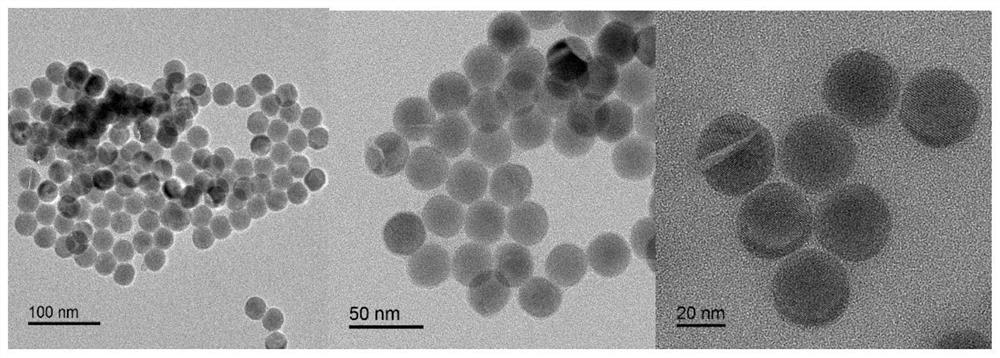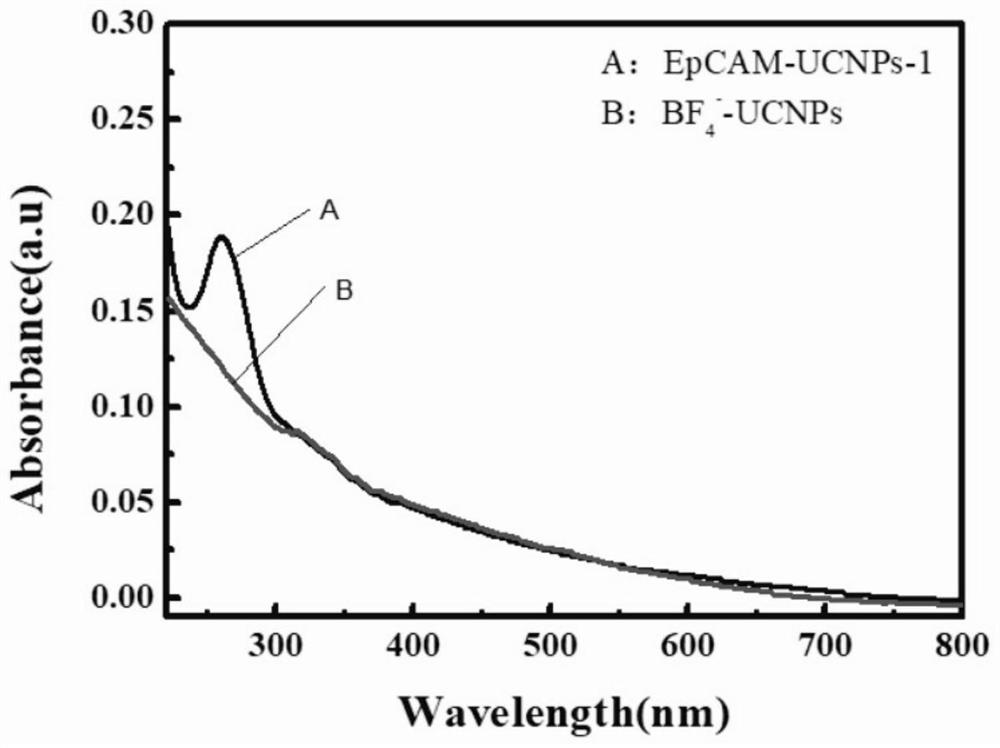Energy resonance transfer technology based on upconversion fluorescence for detection of exosomes
A technology of exosomes and fluorescence, which is applied in the fields of sensors, analytical chemistry and nanometers, can solve the problems of expensive instruments, time-consuming analysis, and large sample volume required to achieve high sensitivity and simplify the experimental process.
- Summary
- Abstract
- Description
- Claims
- Application Information
AI Technical Summary
Problems solved by technology
Method used
Image
Examples
example 1
[0044]Example 1: The preparation method of fluorescent biosensor based on fluorescence resonance energy transfer is:
[0045]1) Preparation of rare earth nitrate: rare earth oxide (RE)2O3), Including oxide (ER2O30.0766g (0.2mmol), oxidation (YB)2O30.7882G (2 mmol), yttrium oxide (Y2O31.7614G (7.8 mmol); Note: M (ER2O3) = 382.52g / mol m (YB2O3) = 394.08g / mol m (Y2O3) = 225.82 g / mol mixed in 250 ml of tri-neck flask, adding dilute nitric acid (concentrated nitric acid: water volume ratio = 1: 1), a total of 100ml, sealing film sealing, water bath magnetic stirring heating 90-100 ° C, clarify After the sealing film is opened, the sealing film is opened, and the extra nitric acid is completely volatilized to obtain a rare earth nitrate solid; 10 ml of ethanol is added after natural cooling, and the mixed rare earth nitrate ethanol solution is obtained after stirring.
[0046]The reaction equation is:
[0047]Among them, the RE represents ER, YB, and Y is 2%: 20%: 78% doped mixture.
[0048]2) ...
example 2
[0058]The fluorescence sensor prepared in Example 1 of the present invention is used to detect exosomes,Figure 4 It is a transmission electron microscopy characterization map of exosomes. The specific detection method is: mix EpCAM-1-UCNPs and EpCAM-2-TAMRA in a solution, and mix different concentrations of MDA-MB-231 exosomes (0, 1 ×103, 1×104, 1×105, 1×106, 1×107, 1×108Pieces / mL) were added to Tris hydrochloric acid buffer containing EpCAM-1-UCNPs and EpCAM-2-TAMRA, and after shaking at 28°C for 1 hour, the fluorescence intensity was measured. Such asFigure 5 As shown, with the concentration of exosomes (A to G in the figure are different concentrations of exosomes (0, 1×103, 1×104, 1×105, 1×106, 1×107, 1×108particles / mL) increases, the fluorescence intensity at 585nm gradually increases.Figure 6 It is the fitted linear relationship diagram of exosomes detection. It can be seen from the figure that the concentration of exosomes and the intensity of fluorescence at 585nm produced b...
PUM
| Property | Measurement | Unit |
|---|---|---|
| diameter | aaaaa | aaaaa |
Abstract
Description
Claims
Application Information
 Login to View More
Login to View More - R&D
- Intellectual Property
- Life Sciences
- Materials
- Tech Scout
- Unparalleled Data Quality
- Higher Quality Content
- 60% Fewer Hallucinations
Browse by: Latest US Patents, China's latest patents, Technical Efficacy Thesaurus, Application Domain, Technology Topic, Popular Technical Reports.
© 2025 PatSnap. All rights reserved.Legal|Privacy policy|Modern Slavery Act Transparency Statement|Sitemap|About US| Contact US: help@patsnap.com



